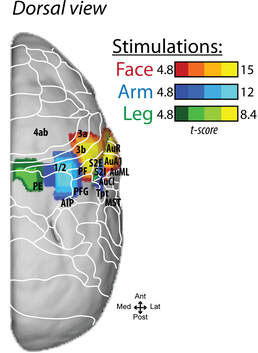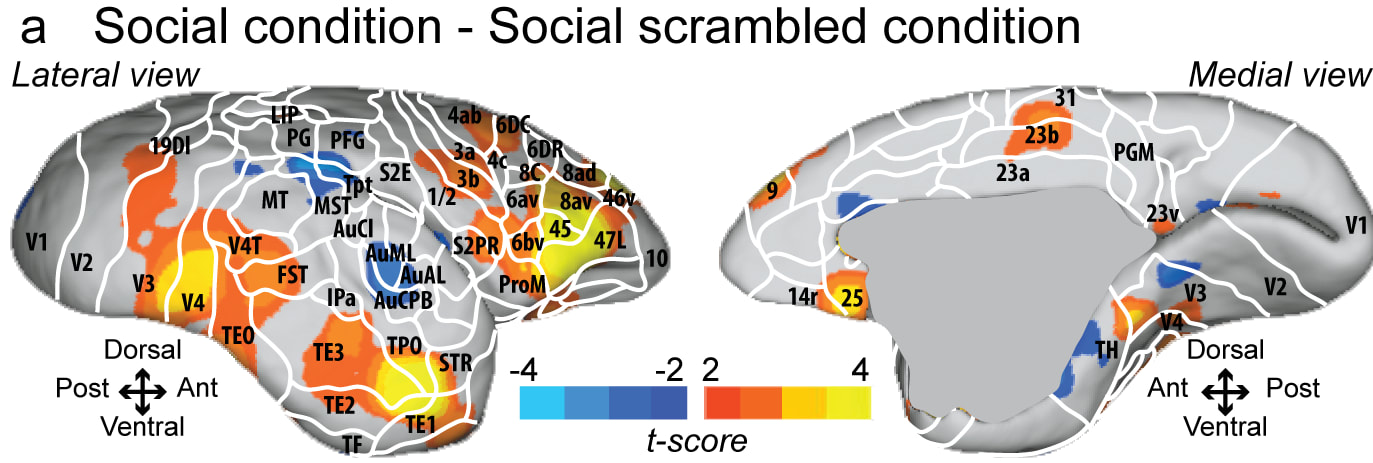The interaction between multisensory integration and social interactions, are being explored at the behavioral level, but less is known about the underlying neural mechanisms and much more remains to be elucidated. Here we use functional imaging technique in awake marmosets to identify their functional networks and how they evolve across the lifespan.
Axe I: Imaging the multisensory integration network
|
Brain mapping of somatosensory stimulation
Cléry et al., (2020). Journal of Neurophysiology |
Information from diverse sensory modalities (e.g., visual, tactile, auditory or proprioceptive) must be sorted and combined by the brain promptly so we can make the right decision or generate the right movement. This process relies on multisensory integration. We are applying functional imaging to identify the functional networks involved in this brain function.
|
Axe II: Imaging the social interaction network
|
Recognizing social interactions and their meanings is essential in human and non-human primate societies. Our previous work has shown a strong involvement of the prefrontal cortex and the parietal cortex. We are now working on identifying how the valence of the social stimuli may impact the brain network (e.g., familiarity, appetitive, aversive stimuli,...)
|
Functional network of social observation interaction
Cléry et al., (2021) eLife |
Collaborative projects
Early biomarkers for development and monitoring of effective disease-modifying therapies: https://itn.neuroimpact.ca/
Lead PIs: Dr. Marco Prado & Dr. Mallar Chakravarty, supported by HBHL and BrainsCAN through CFREF.
TRIDENT: TRanslational Initiative to DE-risk NeuroTherapeutics
Lead PI: Dr. Ravi Menon, supported by New Frontiers for Research Fund (NFRF).
Lead PIs: Dr. Marco Prado & Dr. Mallar Chakravarty, supported by HBHL and BrainsCAN through CFREF.
TRIDENT: TRanslational Initiative to DE-risk NeuroTherapeutics
Lead PI: Dr. Ravi Menon, supported by New Frontiers for Research Fund (NFRF).
Why the marmoset?
The common marmoset (Callithrix jacchus), a New World primate, is an ideal animal model. First, they live in family groups and share a rich and complex social repertoire with humans (e.g., prosocial behavior, social cognition, cooperative breeding,...). Second, compared to the traditional primate model—the macaque monkey, the marmoset has a short lifespan and a high reproductive power, ideal for neurodevelopmental studies. Third, unlike rodents, marmosets share homologous frontoparietal networks with humans, which play a crucial role in cognitive functions in both humans and nonhuman primates and thus makes the marmoset a promising model for translational studies.










